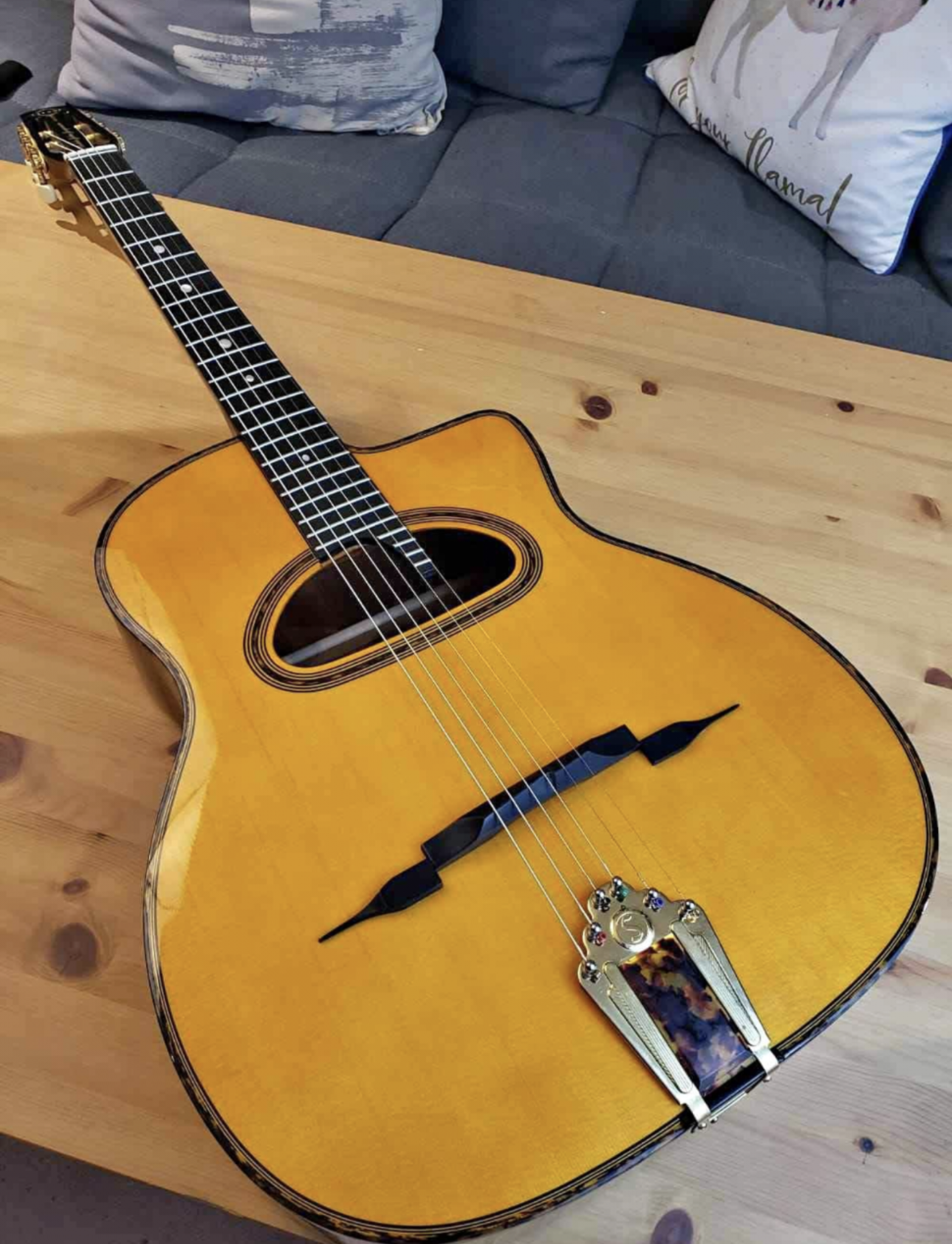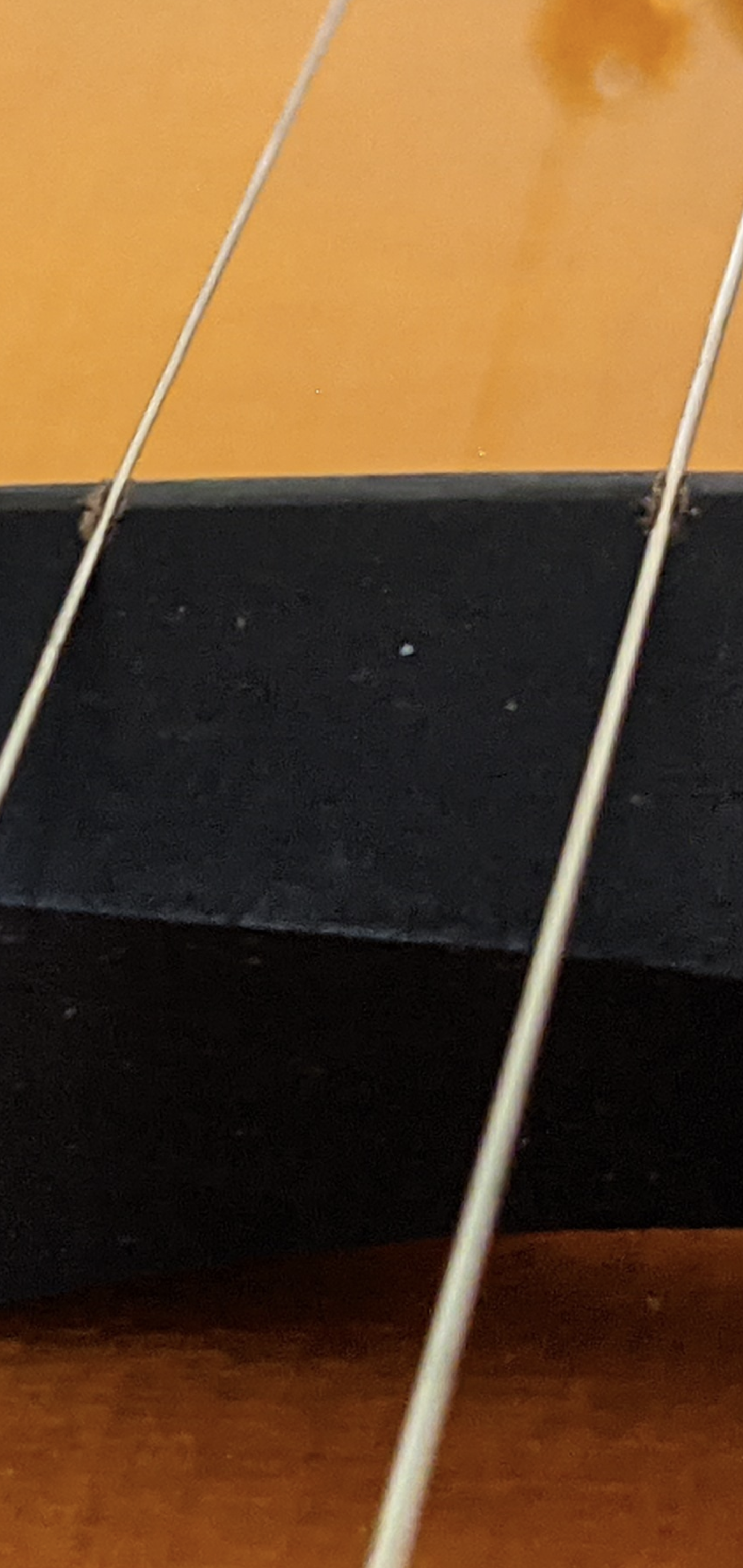DjangoBooks.com
Welcome to our Community!
Categories
- 20K All Categories
- 1.1K General
- 476 Welcome
- 59 Archtop Eddy's Corner
- 146 CD, DVD, and Concert Reviews
- 384 FAQ
- 26 Gypsy Jazz Italia
- 26 Photos
- 202 Gypsy Picking
- 21 Unaccompanied Django
- 15 Pearl Django Play-Along Vol.1
- 17 Gypsy Fire
- 45 Gypsy Rhythm
- 1.4K Gypsy Jazz University - Get Educated
- 130 Gypsy Jazz 101
- 224 Repertoire
- 218 History
- 707 Technique
- 51 Licks and Patterns
- 6 Daniel Givone Manouche Guitare Method Users Group
- 20 Eddie Lang Club
- 1.3K Gypsy Jazz Gear
- 801 Guitars, Strings, Picks, Amps, Pickups and Other Accessories
- 457 Classifieds
- 49 Recording
- 62 Other Instruments
- 18 Violin
- 5 Mandolin
- 22 Accordion
- 7 Bass
- 10 Woodwinds
- 346 Gypsy Jazz Events
- 142 North America
- 109 Europe
- 95 International
In this Discussion
Who's Online (0)
Intonation Issues
 Miketoberfest
Ontario, CanadaNew JJM DG-320
Miketoberfest
Ontario, CanadaNew JJM DG-320
Hi everyone, long time lurker, first time poster.
Last week I obtained my first gypsy style guitar - Gitane DG-320 jjm. The gentleman I bought it from said it was a year old. It hasn't got a scratch on it. Really great find. However, there seems to be an intonation issue. The bridge has to be moved quite a ways forwards to get good intonation. Is this normal? The previous owner did not keep it in a case and mentioned that the humidity was always somewhat controlled in the room. I have since obtained a case and plan on getting the guitar properly humidified. There is also a badly muted note on the 13th fret e string. I'm not sure if the two issues are related. The neck is straight with little relief. No obvious signs of drying out.
Also the slots in the bridge for the strings seem to be quite deep, especially the b and e. I believe the tone of the e string is suffering because of this. Does it look off? The strings pictured sit lower than the tip of the bridge. Looks terrible to me. I think the guitar would benefit from a new bridge.
Any insight is appreciated.












Comments
Hi Mike
What is the height of the action at 12th fret? What strings do you have on it? These answers will help determine what is going on with bridge location.
The strings do need grooves to keep them in place, but those are a little deep. Sometimes that is a big problem for sound, but sometimes not. There are so many factors to consider. If the action is ok as it is, you can remove material from the top of the bridge (try a small, hard sanding block with 320 or 400 paper) so the strings are at the same height, but don't have quite as much wood squeezing on each side of the string.
Thanks for responding Jared.
The action at the 12th fret is about 1.5mm on high e and 2.2mm on low E. I realize now that this is quite low for these guitars right? I think the previous owner mentioned that the strings are d'addario gypsy jazz strings. I just received a set of argentine 10's in the mail yesterday. I've also got two veneer pieces for shimming the bridge if needed.
If you measure the length from zero to the 12th fret, that should be exactly the same distance between 12th fret and the high E where it terminates at the bridge. That should be the starting point for the intonation and it theory it should stay right there.
But if the guitar plays well otherwise, you could move the mustache ends to match the bridge.
Replacing the bridge is usually a good bang for the buck upgrade too.
1.5mm wouldn't be unusual on a Martin but it is unusual on this type of the instrument.
Assuming you're measuring from top of fret to bottom of string, the strings should maybe go up about 0.6mm on each side, meaning the shims should be about 1.2mm thick. But that may increase neck relief ("bow"), so less than 1.2 may work. Or, you could go for higher action.
Not sure how it would relate to intonation, though.
Since you are coming out of winter in Ontario, that top will almost certainly be dry and the action will have fallen a bit, but the picture shows a fairly extreme issue with either the intonation, the moustache locations, or both. The Argentines will probably sound better.
As Buco says, the bridge should be very close to double the distance from nut to 12th fret. Measure from centre of zero fret to centre of 12th fret and double it. That is your scale length. For this guitar, I'd guess 670mm, but it could be more or less. I don't know these Gitanes. For an action at 1.5mm, you will still likely need to add around 2mm to the scale length to compensate for string stretch on high E, a little more on low E. So start by moving the centre of the bridge to scale length plus 1.5 or 2mm for compensation. The longer the scale length and the higher the action, the more compensation is required. Different string gauges and materials play into this too, but don't worry too much about those smaller variables right now.
Now, with the action at 1.5mm on a guitar like this you likely aren't getting half the sound you could get out of it. I suggest using shims to get the action on high E to a minimum of 2.0mm and low E to 2.5mm. 2.5 and 3.0 would be good if you can handle it. Many people go still higher, but I'm not man enough and my guitars all sound good at 2.0-2.5, E-E. Shim twice the thickness of the action change you want to get. So a 3mm shim gets you roughly 1.5mm action change at 12th fret. Higher action will mean the strings have to get pushed down further and get bent sharper as you move toward the bridge, so the bridge will need to move back toward the tail a bit further to compensate for that extra stretch. You want the harmonic at the 12th fret to be in tune with the fretted note at 12th fret. Strike the harmonic then compare with fretted note. If fretted note is sharper than harmonic, bridge needs to move towards the tail. If fretted note is flat, then the opposite.
All this will likely push your bridge closer to the moustaches, but maybe not if the moustaches were poorly positioned by the manufacturer. The main thing is to get the action and intonation right so that it will play and sound well. If the moustaches are still out of whack, then you could either live with the cosmetic issue or carefully remove and reglue them in a better location. Wait until you are SURE you have the action and intonation and strings exactly as you want them before attempting that. Since you are just getting into all this, that might be a while. I'd wait several months and find out what action works best for this instrument when the humidity comes back up later in Spring.
Of course you could just find a local luthier to handle all of this.
Welcome to the forum from Niagara-On-The-Lake, Mike!
I had the same problem when I had to replace the bridge of a “Saga” Asian knock-off gypsy guitar which I used to own.
It sure is annoying when the moustaches no longer line up with the bridge.
In my case, luckily the problem got solved for me because the guy who sold me the guitar for $300 (US equivalent: about $250) wanted to buy it back at the same price.
Which was fortunate because removing those moustaches was a job I really didn’t fancy.
***
As I have often said around here, we are now living in a golden age of Asian knock-offs.
That cheap guitar had the best action of any guitar I have ever owned!
Never a buzz, and the volume and tone were fairly average for a gypsy guitar.
Even topnotch GJ guitarist Stephane Wrembel tried it at Django In June and liked it.
I wish I still had that guitar, not for myself; I would sell it to that guy in South Africa who wants to try and use an archtop to learn to play GJ on.
Edgar Degas: "Only when he no longer knows what he is doing does the painter do good things.... To draw, you must close your eyes and sing."
Georges Braque: "In art there is only one thing that counts: the bit that can’t be explained."
Not to derail the thread, but aren't all Selmer copies "knock-offs?"
No. I would call a knock off, a cheap imitation. A copy of just that, a copy.